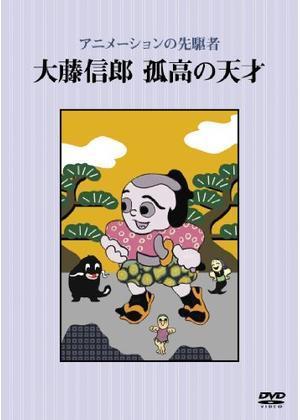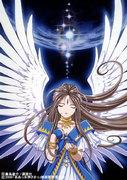The appeal and reviews of "Kujira": A deep story and beautiful images

"The Whale" - A masterpiece of shadow animationOverview"Kujira" is a Japanese animated film released in 1952, directed by Ofuji Nobuo and produced by Ofuji Studio. This film is an original anime and was released in theaters. It is packed with deep artistry and beauty in a short 9-minute episode. ■ Public InformationRelease Date: December 1952 Release Media: Theater ■Production informationDirector: Nobuo Ofuji Production: Ofuji Studio, Nobuo Ofuji ■Evaluation"The Whale" is known as a color cellophane shadow animation that was highly praised by Picasso. It was the first color shadow animation using color cellophane, and is a color reproduction of a shadow animation made in 1927. This work won second place in the short film category at the Cannes Film Festival in 1958, and its artistic quality was recognized worldwide. ■Explanation"Kujira" expresses a unique beauty and depth by utilizing the traditional technique of shadow art, while incorporating a new material, colored cellophane. The story depicts a whale swimming gracefully in the ocean, and the beauty of its movement and colors captivates the viewer. Ofuji Noburo's meticulous drawing and sense of color make this work shine even more. ■ Main staffMusic: Tetsuo Tsukahara ■Detailed explanation"Kujira" is a work that occupies an important place in the history of shadow puppet animation. Shadow puppets are a technique that uses light and shadow to tell a story, and its origins date back to ancient times. However, by incorporating colored cellophane into this traditional technique, Ofuji Nobuo has opened up new possibilities for expression. Colored cellophane produces vibrant colors by allowing light to pass through, further enhancing the beauty of the shadow puppets. The background to the creation of this work gives us a glimpse of Noburo Ofuji's passion and spirit of inquiry for art. He sought to further enhance his own expressive power by recreating in color a shadow play he created in 1927. The result was a work of art that was praised by Picasso himself. Picasso was moved by the beauty of the colors and movement in this work, and highly praised its artistic merit. The story of "The Whale" depicts a whale swimming gracefully in the ocean. The whale's movements are so realistic that they seem almost lifelike, and have the power to draw the viewer in. The beauty of the colors, such as the blue of the ocean and the color of the whale's body, is also not to be missed. Ofuji Noburo's sense of color makes this work shine even more, and leaves a deep impression on the viewer. ■ Evaluations and Awards"The Whale" won second place in the short film category at the 1958 Cannes Film Festival, and its artistic merit was recognized worldwide. This award was proof that Ofuji Noburo's shadow animation had received international acclaim, and it was the moment when his passion and hard work for his art bore fruit. The high praise from Picasso also contributed to increasing the value of this work. ■ Behind the ScenesNobuo Ofuji's meticulous drawing and sense of color were essential to the creation of "Kujira." He carefully depicted the movement and colors of the shadow puppets one by one, bringing out their beauty to the fullest. The idea of using colored cellophane was born after much trial and error, and the result was a work of unique beauty. ■MusicThe music for "Kujira" was composed by Tetsuo Tsukahara. His music enhances the graceful movements of the whales and the tranquility of the ocean, enhancing the overall atmosphere of the film. The fusion of music and images further enhances the appeal of the film, leaving viewers with a deep emotional response. ■Recommendation"The Whale" is recommended for those who want to appreciate the beauty and artistry of shadow animation. The deep expressiveness and beautiful colors packed into a short time will move the viewer. This work was also highly praised by Picasso, so it is a must-see for art lovers. Please come and experience its beauty at the theater at least once. Related information For more information about "Kujira" and related works, please refer to the following books. |
Recommend
More photos from the new Marvel series "Daredevil" released
More set photos of Marvel's rebooted version ...
"Uncle Punisher" is back! Anti-hero "The Punisher" Season 2 preview
Your "Uncle Punisher" is back! After Ne...
The Martian Circus: A unique fusion of worldview and music
Circus of Mars - Caseino Circusdan "The Circ...
Appeal and evaluation of "Cat's Eye 2nd Season": The success of the sequel and new developments
Cat's Eye 2nd Season: Reevaluating a classic ...
Tencent Video releases a large number of new films, including "The Three-Body Problem" and "Douluo Dalu 2"
Recently, Tencent Video held its annual press con...
MF Ghost 1st Season - What is the appeal of this new generation racing anime that depicts the soul of a street racer?
MF Ghost 1st Season - MF Ghost "MF Ghost,&qu...
Director Gunn criticized the random cameos in superhero movies: forcing roles in them ruins the plot
Director James Gunn, the head of the new DC super...
The appeal and reviews of "Maria-sama ga Miteru": A thorough analysis of the touching school drama
The appeal and evaluation of the Maria-sama ga Mi...
Review of "Time of Eve": A fusion of moving story and beautiful images
"Time of Eve": A moving story that ques...
The Diary of Anne Frank: A moving, insightful and inspiring animated masterpiece
"The Diary of Anne Frank": An animated ...
New trailer for the animated film "Sword Art Online: Attack on Titan: Aria of the Starless Night"
When "Sword Art Online: Alicization" wa...
Review of "Kyou no Uraken": A fascinating story and deep character development
"Kyou no Uraken" - A new TV anime serie...
The Haunting of Hill House Season 2, IGN's Best TV Show of 2018, premieres with trailer
The Haunting of Hill House, which won the IGN TV ...
The Chinese Paladin III animation PV is released
The promotional PV of the animated adaptation of ...
A thorough review of Little Busters! ~Refrain~'s deep emotions and character growth
The appeal and reviews of Little Busters! ~Refrai...







![Review and impressions of Slimy Monsters ANGJA MONGJA [2nd season]](/upload/pic/08412.jpg)

